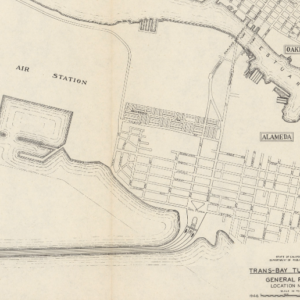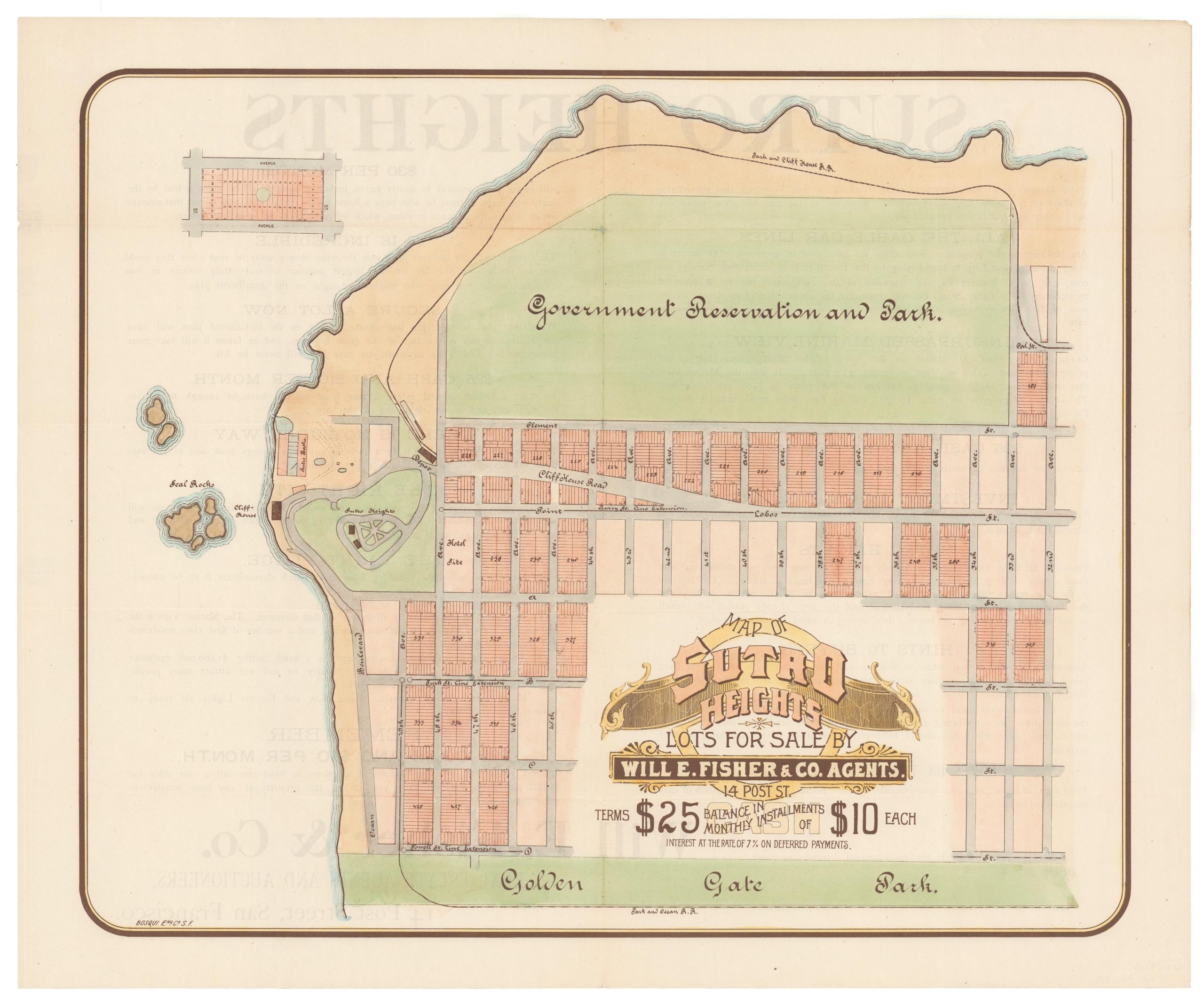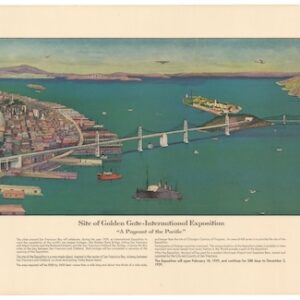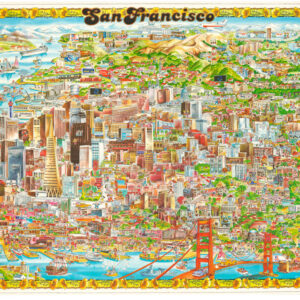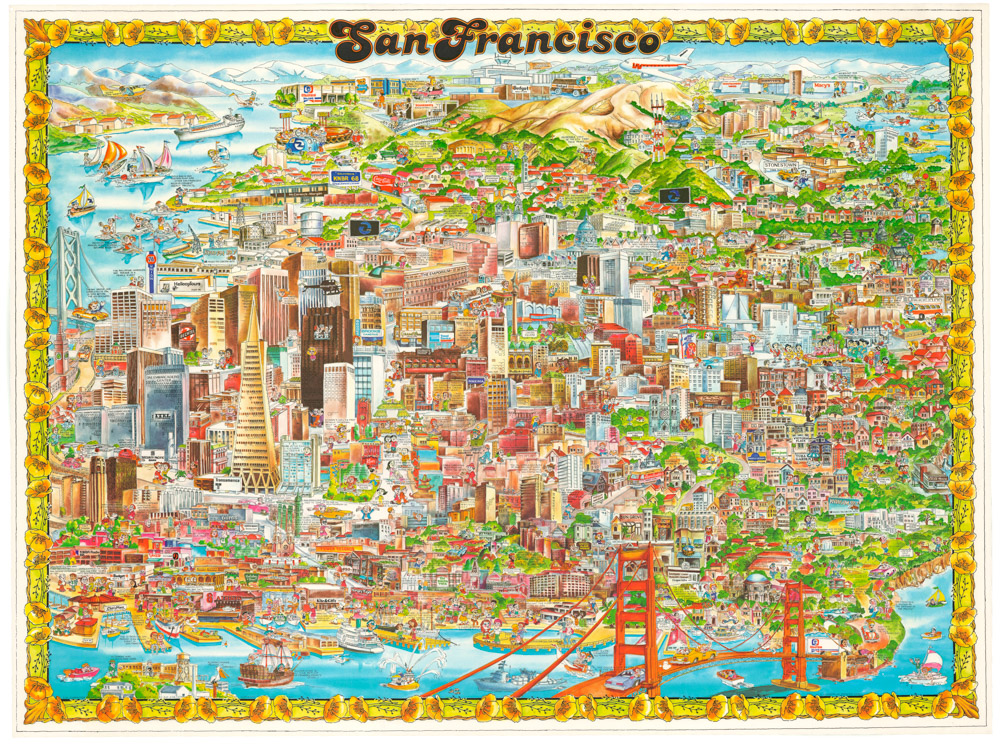Rare cadastral and Southern Pacific Railroad right-of-way tidal lands map of Mission Bay.
Map no. 3. Salt marsh and tide lands situate in the city and county of San Francisco. To be sold at public auction by order of the Board of Tide Land Commissioners by Talbert & Leet, auctioneers, at their sales rooms no. 526 California Street, San Francisco. Sale to commence Friday Nov. 26th, 1869.
$3,400
1 in stock
Description
This is a cadastral map focused on the Mission Bay and Dogpatch neighborhoods of San Francisco. Rumsey notes that it was “one of a series of maps published between 1869 and 1873 showing tidelands to be sold by order of the Board of Tide Land Commissioners.” The series consisted of at least twelve maps, of which this is number three. It depicts the area from China Basin south to Islais Creek, and inland to part of Potrero Hill.
The pertinent historical background to this map is the so-called Mission Bay Tidelands Controversy of 1868-79, which revolved around questions of land claims and of whether and how much land along the southern waterfront should be granted to the railroad companies as rights-of-way. As part of the Tidelands Act of 1868, Mission Bay and Hunter’s Point were surveyed and evaluated.
This was one of the maps produced as a result. It captures San Francisco’s complex topographic and urban development history, giving a sense of the varied landscape of salt marsh lands, water lots, and natural bedrock that make up the foundation of the city today. An irregular line of salt marshes is labeled the “Red Line of Mission Bay,” inside of which are water lots sold during the Peter Smith sales of 1853. A right-of-way for the Southern & Western Pacific Railroad is delineated.
Another interesting feature of this map is its depiction of a proposal to continue the Channel Street canal to Seventh Street at a width of 140 feet, then to angle and narrow it to meet the mouth of Mission Creek at a width of 60 feet. The current canal, which begins at the San Francisco Giants stadium (which here at Neatline will forever be known as Pac Bell), ends short of Seventh Street at Berry. (Olmsted, p. 64)
The map offers a wealth of information about wharves, railroads, homestead associations, and important buildings. Examples of the latter include depictions of the Pacific Rolling Mills, the West’s first iron and steel producing foundry, Pacific Glass Works, and the factory and rope walk of the San Francisco Cordage Company.
Census
This map is rare. OCLC/WorldCat locates four copies — at the California Historical Society, UC Berkeley, UCLA, and Yale. The David Rumsey Collection also contains a copy.
From the collection of noted collector Warren Heckrotte.
Cartographer(s):
George F. Allardt (died July 27, 1903) was a civil engineer based in San Francisco who conducted extensive surveys of the State of California. He is most known for being the lead surveyor for the Board of Tide Land Commissioners (BTLC), which was charged with defining the high tide line for the Bay Area, thus forming the basis for the official reclamation of tidal lands in the Bay Area. Allardt was deeply involved in the survey and subdivision of 17,000 acres of the San Pablo Rancho. At the time, it was one of the largest surveys ever made in California. Moreover, he created Allardt’s Official Map of Alameda County.
George Holbrook BakerGeorge Holbrook Baker (1827-1906) was a Massachusetts-born artist who learned his trade from the New York engraver George C. Smith. Following his apprenticeship, Baker attended the National Academy of Design before emigrating to California during the height of the Gold Rush. He arrived in San Francisco in late May 1849, and within three months, his first views of the town were being published in New York.
Baker briefly tried his luck prospecting for gold, but like so many other emigrants, he found that it was easier to make a living using the talents and skills with which he arrived. Even today, it is a commonly held notion that the people who became rich from the Gold Rush were the shovel and pan-sellers rather than the prospectors themselves.
In 1852, Baker moved from San Francisco to the new state capital at Sacramento, where he started several businesses and two periodicals while also creating new and sought-after views of northern California. In 1857, Baker drew and published a large birds-eye-view of the young ‘City of the Plain’ (printed as a lithograph by Britton & Rey in San Francisco), which achieved enormous popular success. In 1862, after a devastating flood had ruined him, Baker moved back to San Francisco and started a lithography and publishing firm that specialized in advertising and posters, including architectural and urban vistas, dedicated stock certificates, and regional maps. Despite more than a decade of success, his company was gradually outcompeted during the 1880s, and by around 1890, Baker closed his doors and retired.
Despite his ending in commercial failure, George Baker is acknowledged as one of the most significant artists and lithographers of the Gold Rush era. His work constitutes some of the most important visual documentation of California during the formative decades of its incorporation into the United States.
Condition Description
Backed with archival paper. Some spotting.
References
Olmsted, Nancy. Vanished Waters: A History of San Francisco's Mission Bay. San Francisco, CA: Mission Creek Conservancy, 1986.
Rumsey 3970.000.
